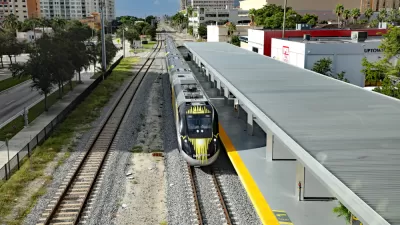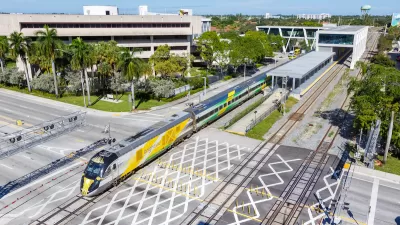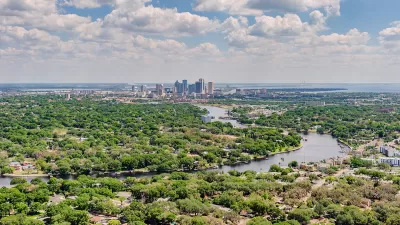A Brightline official recently made public comments about the construction progress and the service design of the planned extension of the Brightline high-speed rail system between South Florida and Orlando.

Rick Neale provides an update on the future plans of the Brightline high-speed rail system in Florida after a recent speech by Mike Cegelis, Brightline executive vice president of infrastructure, delivered to the Melbourne Regional Chamber.
According to the article, "Passenger service is expected to begin in early 2023 on the privately held company's $2.7 billion extension linking South Florida with Orlando International Airport — which leads through Brevard County." Work on the 169-mile project is already 63 percent complete, according to Ceglis's statements at the event.
The article also presents numerous details about the specifics of the system where it passes through Brevard County, located along the Atlanta Coast of Florida, to the east and south of Orlando. No stations are planned in Brevard in the near future, but trains will be passing through at 79 to 110 miles per hour. Headways in each direction will be one hour.
"Trains will take a little more than three hours to travel between Orlando and Miami, and tickets will cost about $100 one-way," reports Neale.
Another big piece of the Brightline puzzle—an extension from Orlando to Tampa, which cleared a major milestone in March, is still undergoing environmental review.
FULL STORY: Brightline planning 320-mile Florida passenger rail route from Miami to Tampa by 2028

Study: Maui’s Plan to Convert Vacation Rentals to Long-Term Housing Could Cause Nearly $1 Billion Economic Loss
The plan would reduce visitor accommodation by 25,% resulting in 1,900 jobs lost.

North Texas Transit Leaders Tout Benefits of TOD for Growing Region
At a summit focused on transit-oriented development, policymakers discussed how North Texas’ expanded light rail system can serve as a tool for economic growth.

Why Should We Subsidize Public Transportation?
Many public transit agencies face financial stress due to rising costs, declining fare revenue, and declining subsidies. Transit advocates must provide a strong business case for increasing public transit funding.

How Community Science Connects People, Parks, and Biodiversity
Community science engages people of all backgrounds in documenting local biodiversity, strengthening connections to nature, and contributing to global efforts like the City Nature Challenge to build a more inclusive and resilient future.

Alabama: Trump Terminates Settlements for Black Communities Harmed By Raw Sewage
Trump deemed the landmark civil rights agreement “illegal DEI and environmental justice policy.”

Dear Tesla Driver: “It’s not You, It’s Him.”
Amidst a booming bumper sticker industry, one writer offers solace to those asking, “Does this car make me look fascist?”
Urban Design for Planners 1: Software Tools
This six-course series explores essential urban design concepts using open source software and equips planners with the tools they need to participate fully in the urban design process.
Planning for Universal Design
Learn the tools for implementing Universal Design in planning regulations.
City of Santa Clarita
Ascent Environmental
Institute for Housing and Urban Development Studies (IHS)
City of Grandview
Harvard GSD Executive Education
Toledo-Lucas County Plan Commissions
Salt Lake City
NYU Wagner Graduate School of Public Service





























